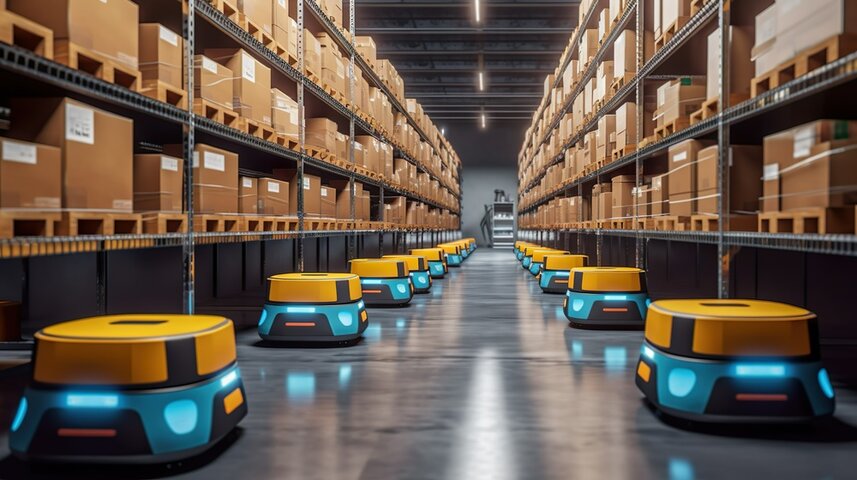Interoperability: The Un-noticed Buzz

In the modern warehouse where efficiency reigns supreme, a silent transformation is taking place to address the operational efficiency fears once and for all. It’s not the flashy gadgets or the grand innovations that steal the spotlight but rather the increasing synergy between machines. Picture the Matrix code streaming effortlessly between machines, each node understanding its role in the broader choreography of operations. Interoperability, the ability of AGVs to work in harmony with other mobile robots, warehouse systems, and infrastructure, represents not just a technological leap but a fundamental shift in how we are now approaching logistics and manufacturing.
A strategic imperative to deal with labour shortages
The driver behind this change is the looming labour shortage. Even before the pandemic, signs of a dwindling workforce were already apparent. In the United States alone, approximately 1.4 million manufacturing jobs were lost, intensifying an already growing concern within the industry. According to research from the Manufacturing Institute, projections indicate a shortfall of 2.1 million skilled labour positions by 2030. In the face of such forecasts, AGV interoperability emerges as a strategic imperative for manufacturers and sectors reliant on efficient material handling.
The role of effective communications
Yet, for all its potential interoperability lacks the ‘buzz’ that typically surrounds ground-breaking technologies. It exists predominantly within the confines of industry trade shows and specialised forums, far from the mainstream spotlight. This is where Public Relations (PR) comes into play.
PR serves as the amplifier for the narrative of interoperability, closing the gap between technological innovation and its real-world impact. It communicates how AGV positively impacts the challenges faced by industries worldwide.
At its core, PR for interoperability must focus on education and advocacy. It is about translating complex engineering jargon into a language that communicates the business benefits clearly and effectively. Through targeted campaigns and thought leadership initiatives, PR professionals can highlight the contribution of interoperability to increase efficiency, reduce labour dependency, and enhance adaptability to dynamic operational environments.
Moreover, PR fosters collaboration and partnership within the industry ecosystem. By promoting real world implementations and enabling dialogue among key players, PR initiatives can foster greater adoption and standardisation of interoperable systems.
The un-noticed buzz and great potential
In conclusion, interoperability is not getting the attention it deserves in the material handling sector beyond the confines of trade shows and industry forums. It represents a dynamic shift in how we approach automation and collaboration, offering a glimpse into a future where machines not only work autonomously, but in perfect harmony. PR has a huge role in shaping the dialogue around the transformative power of interoperability.